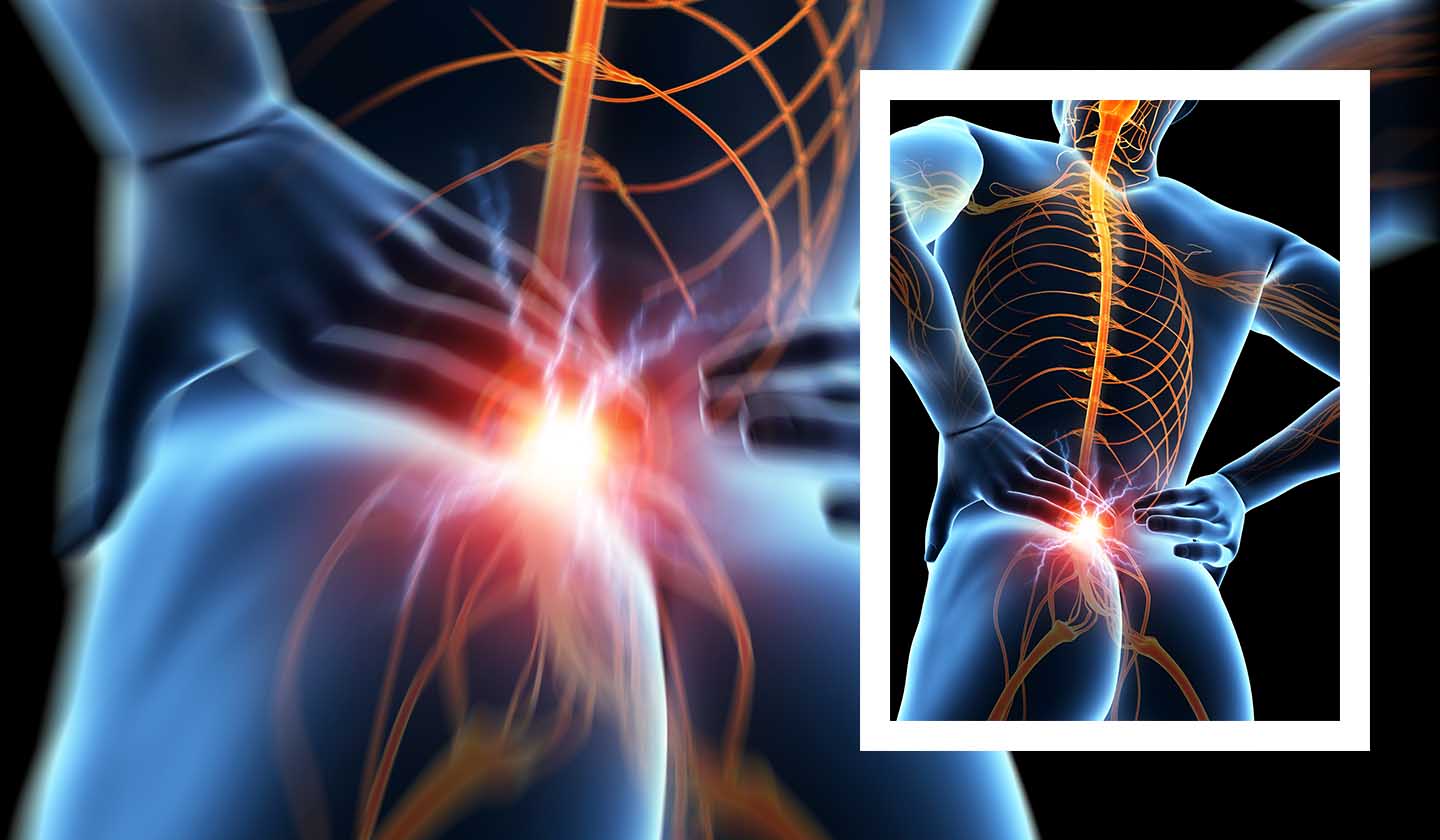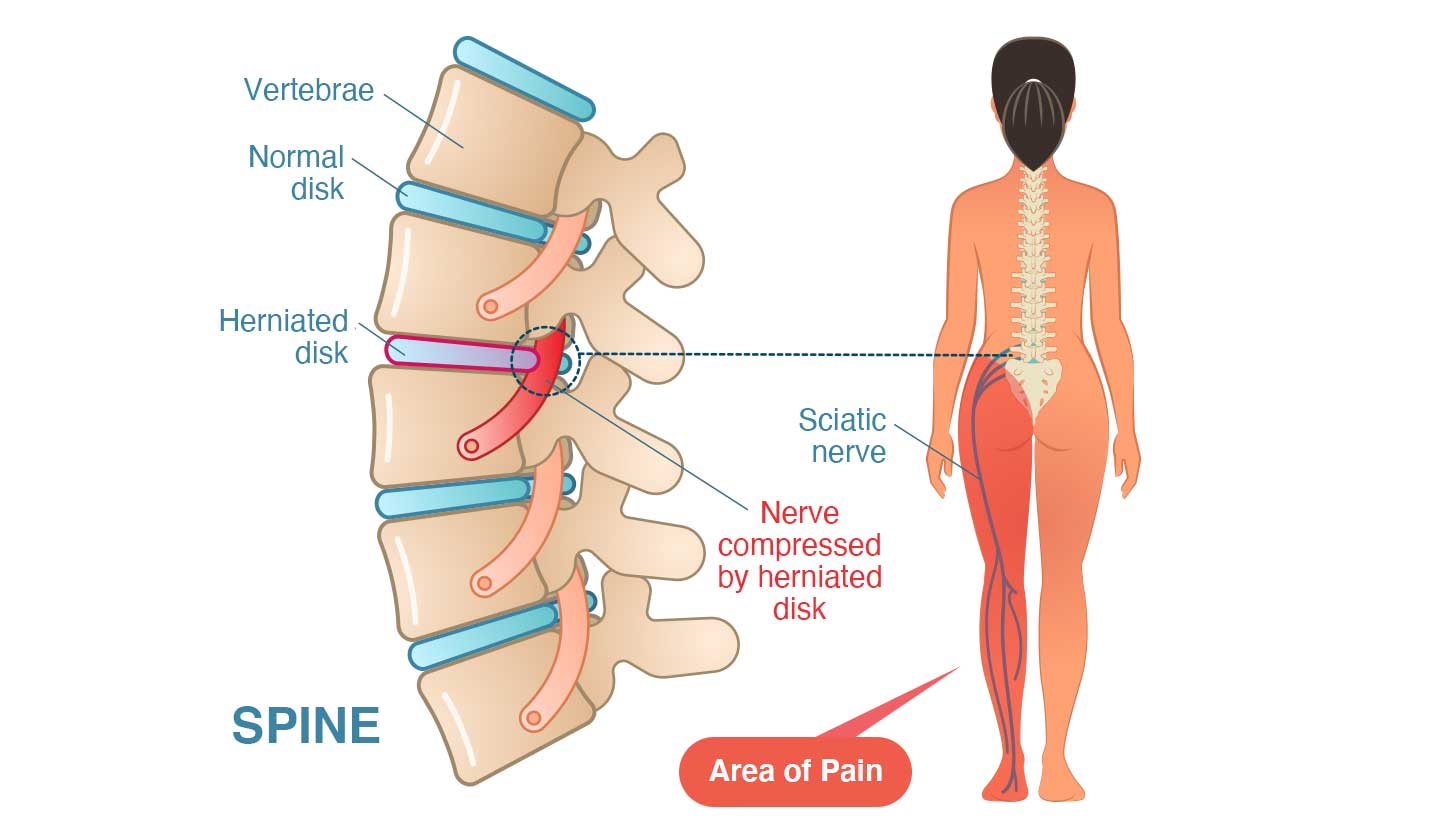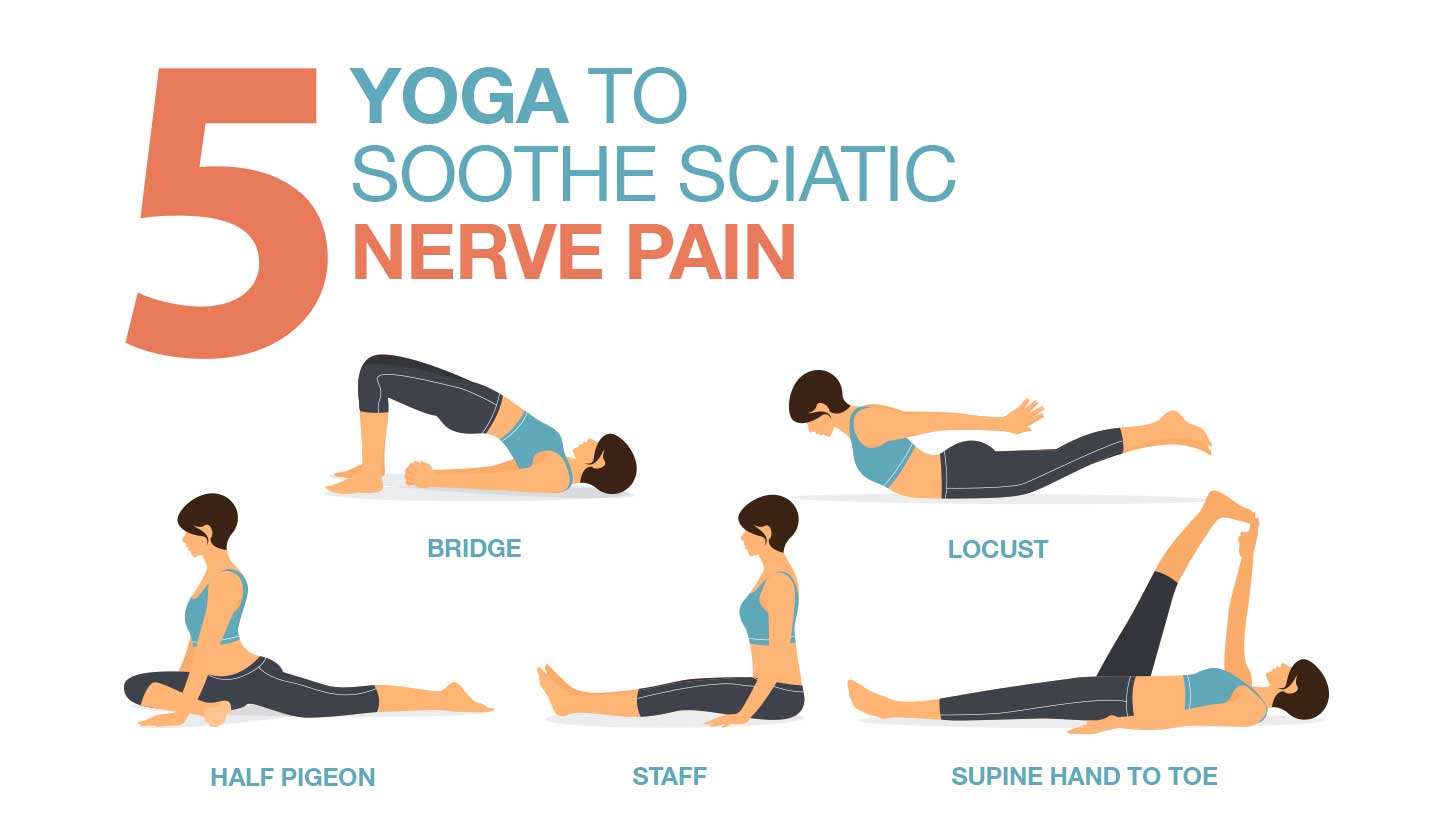Nervous system
Preventing sciatica - A matter of nerve

Given that sciatica is very bothersome, it is better to prevent it. The best weapon is knowing how to use your body correctly.
Nerve under pressure
The sciatic nerve travels a long way in our body: it starts at the bottom of the spine (in the lower back) and goes down towards the buttocks - it is then divided in two, going through each leg up to the toes.
It allows the movement of the leg muscles, enabling the movement of the lower limb joints, in addition to being responsible for sensory functions.
When, somewhere along that path, the nerve is subjected to pressure or becomes inflamed, a pain sets on – this pain is known as sciatica. The pain intensity is variable and often accompanied by a sensation of burning, numbness, and muscle weakness, in the leg or foot on the affected side, as well as tingling in the fingers.
Sometimes, discomfort can be higher, namely when getting up and sitting, when bending your back or walking a few meters, or even when coughing or sneezing. At night it can get worse.

Some predisposing factors of sciatica are:
- Age over 30 - the discs between the vertebrae start to become worn, ceasing to adequately cushion the movements of the spine;
- Profession - driving vehicles for long periods of time and carrying heavy loads implies greater strain on the spine;
- Body position - standing or sitting for a long time causes pressure on the nerve, as well as incorrect body postures when rotating or flexing the spine;
- Diabetes- increases the risk of nervedamage;
- During pregnancy - the compression caused by the abdomen can also result in sciatica symptoms. Weight gain implies greater strain on the spine and may predispose or aggravate an existing injury.

Relieving discomfort
Sciatica tends to disappear in 4 to 8 weeks, even without treatment. But, when the pain is intense, relief must be sought:
- Alternating cold with heat - apply ice within the first 48 hours (15 to 20 minutes each time, several times a day). In a second stage, applying hot compresses or a hot water bag may be more effective, alternating between cold and heat if the pain persists;
- Medicines - analgesics are effective in mild situations, but when the pain is more intense, anti-inflammatory drugs or muscle relaxants may be necessary;
- Rest – it should be moderate and only at an early stage: excess rest worsens sciatica;
- Stretching exercises – they decrease compression on the nerve, thus reducing pain.

Preventing before it hurts
- Practise physical activity regularly - it increases muscle flexibility and resistance, decreases the risk of sciatic nerve compression and helps to control weight;
- Maintain a correct posture - sit with your back straight and feet flat on the floor; avoid crossing your legs; take short breaks to stretch your legs;
- Pay attention to your body movements - if you lift weights, bend your knees, not your back and carry objects at your waist level; if you are standing upright for a long time, try to unlevel your feet, for example by placing one of them on a step; sleep on a spine-friendly mattress and with a pillow that does not strain your neck;
Sciatica should not be ignored: If it is too intense, talk to your doctor, as it may be a symptom of a more serious health problem.
Sources
iSaúde
Farmácia Distribuição Magazine
Também lhe poderá interessar
Bones and joints
When do we think we are rusty? That's arthrosis
Bones and joints






